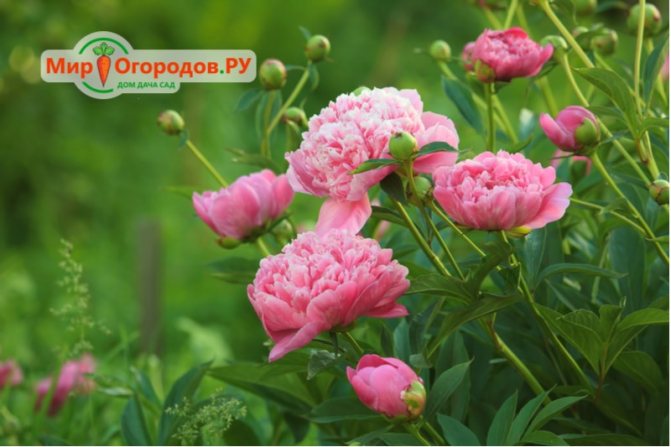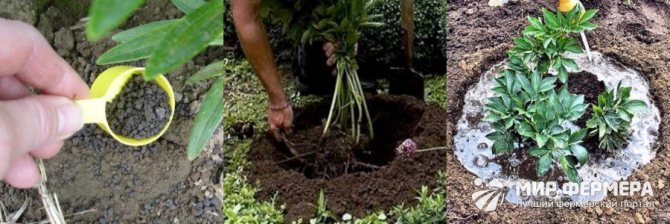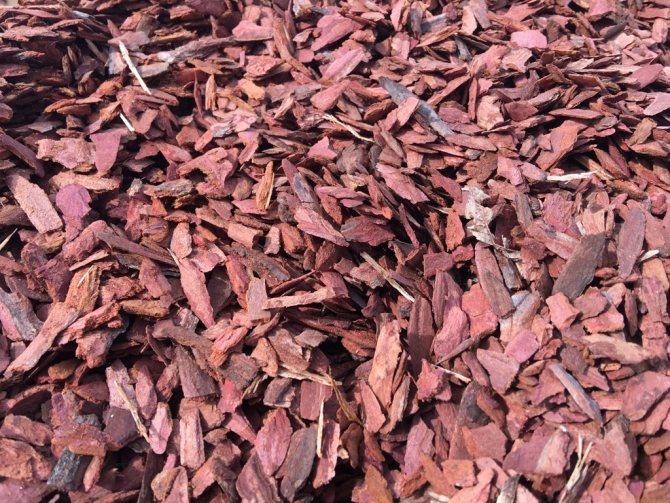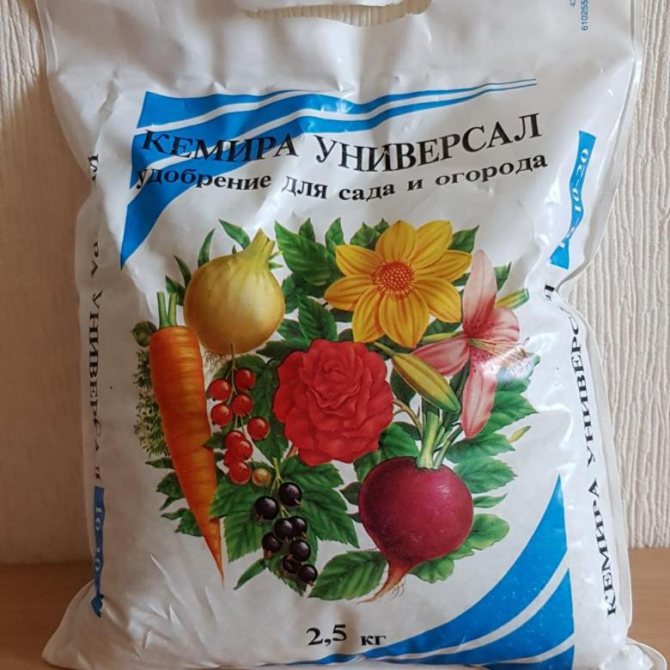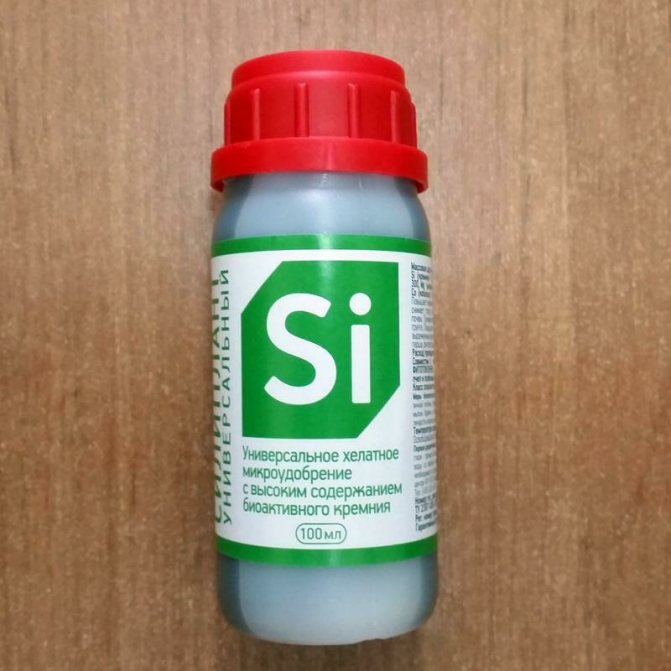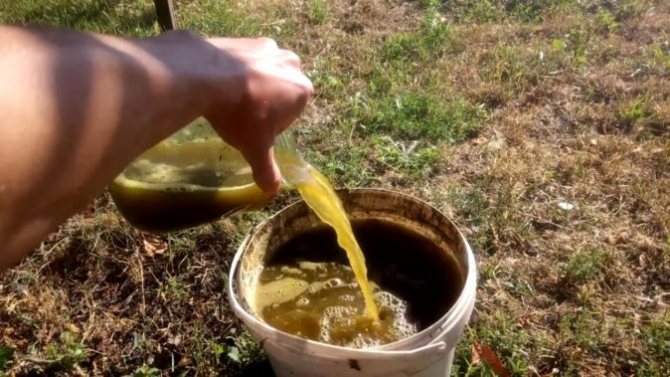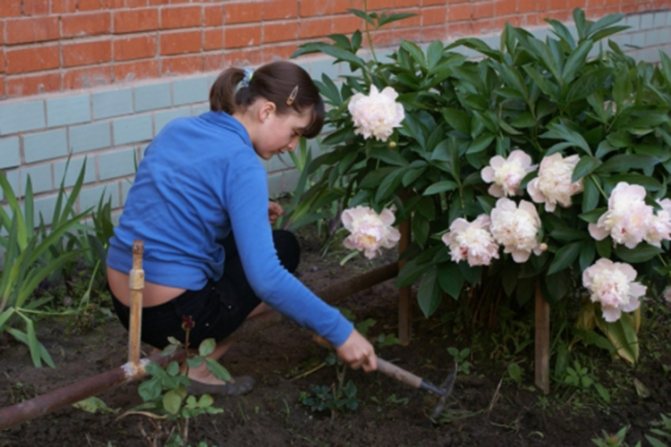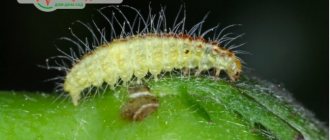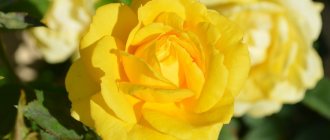The peony is considered an unpretentious plant, but despite this, it must be fed periodically to ensure full growth and abundant flowering. To know how and how to feed peonies correctly and with what, it is worth familiarizing yourself with the general rules for applying fertilizers that are suitable for this ornamental plant.
- 2 Schemes for applying top dressing depending on the season
2.1 Spring
2.1.1 Video: features of spring feeding
- 2.2.1 Video: what fertilizers are required for peonies after flowering
- 2.3.1 Video: feeding peonies before wintering
Why do peonies need feeding
Peonies not only look beautiful, but also are not capricious flowers - they multiply without problems, do not need private transplants and constant painstaking care. Due to these properties, plants are so often found in summer cottages and vegetable gardens. But despite the unpretentiousness, this beautiful flower cannot be completely deprived of attention. Timely top dressing in spring is not only important for lush and beautiful flowering, but also necessary for the general strengthening of the plant, to increase its vitality.
By the way! The introduction of high-quality fertilizers is important for both herbaceous peonies and tree-like ones.
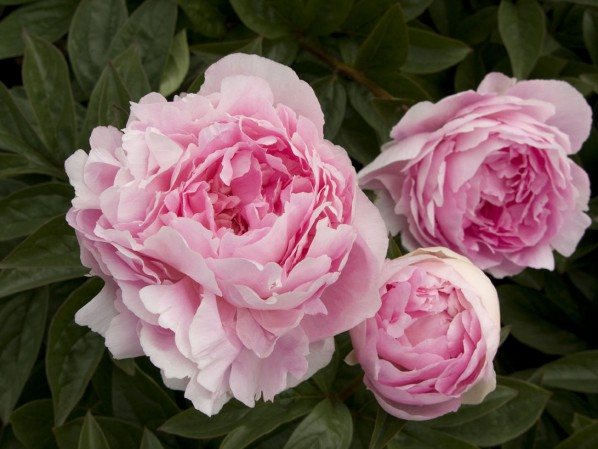
Which method to choose


Choosing between industrial fertilizers and dressings prepared according to folk recipes, flower growers start from their own preferences. In ready-made chemical preparations, nutrients are precisely calculated and selected in the right proportions. For an effective result, it is enough to simply follow the attached instructions. Folk remedies take time to prepare, but their effectiveness has already been proven by many years of practice. The disadvantage of them is that you can easily mistake the proportions.
An important part of caring for peonies is the application of fertilizers that promote abundant flowering. For this, trace elements are used. Additionally, the soil around the bushes is loosened and watered in a timely manner. If you use a lot of organic matter at this time, the green mass actively grows, and the number of flowers decreases.
Plants need bone meal, nitrogen and ash for health. Moreover, some varieties of peonies require constant fertilization. Tree peonies begin to feed from April twice a month. Finish fertilization 2 weeks after the flowers have fallen off.
Fertilizing scheme
First of all, in the spring, after the snow melts, the winter shelter should be removed from the plants, the area should be cleaned of debris that has accumulated over the fall and winter (fallen branches, leaves, etc.). And after that, you should start feeding the peonies in the spring. It is recommended to feed the plant with mineral dressings at certain times and according to a certain scheme:
1) The first time you need to feed the plants when the snow melts. It is recommended to make nitrogen-potassium fertilizers (in the ratio - 10 grams of nitrogen and 10 grams of potassium per one bush of flowers).
2) The second time - during budding. The event should be carried out using the following components: potassium (about 10-15 grams), phosphorus (15-20 grams), nitrogen (10-15 grams).
3) The third spring feeding falls on the budding period after flowering (when 10-14 days have passed). Fertilizing is recommended potassium - 10-15 grams and phosphorus - 15-20 grams.
Compliance with such a scheme will definitely please your flowers and they will answer you with a magnificent color!
How to fertilize peonies in spring
Root feeding of peonies with mineral substances begins from the third year of plant development. Until that time, perennials do not bloom. Foliar spraying with a urea solution is enough for them. Sodium humate is recommended to stimulate the growth of the root system. An adult bush requires regular fertilization during the growing season - from spring to autumn.
Experienced farmers willingly share tips on how to feed plants for lush flowering in the garden. Prepare for the procedure in advance, because manure (chicken or cow) must ferment for 2-3 weeks. Mineral additives, poured into the hole during planting, have already dried up, it's time to renew their supply. Spring feeding of peonies is the most important, it provides a nutritious base for the formation of dense greenery and the formation of buds. During active growth, a plant needs three main components: nitrogen, phosphorus and potassium. In addition to them, flowers need trace elements (magnesium, iron, copper and others).
Features of feeding peonies with organic fertilizers
Organic fertilizers are used by almost all growers. This is due to the fact that organic matter has a high content of useful nutrients, is environmentally friendly and completely safe for the garden and humans, and almost all garden residents will respond with "gratitude" after applying organic fertilizers. And peonies are no exception.
For spring feeding of peonies, it is recommended to prepare organic fertilizers according to the following recipes:
- With mullein and bird droppings... Take fresh mullein and mix with clean water (in a ratio of 1: 5), add some chicken manure (about half as much as mullein). Leave to infuse for ten days. To correctly apply such fertilizer, it is necessary to dig small ditches around the plant (a distance of about 25-30 centimeters). The infusion of mullein and bird droppings should be introduced into these grooves, while it is important to avoid getting the substance on the root collar. Such spring feeding is recommended during the budding period, once a season is enough. Organic fertilizer strengthens the plant's immunity, protects against diseases and stimulates lush flowering.
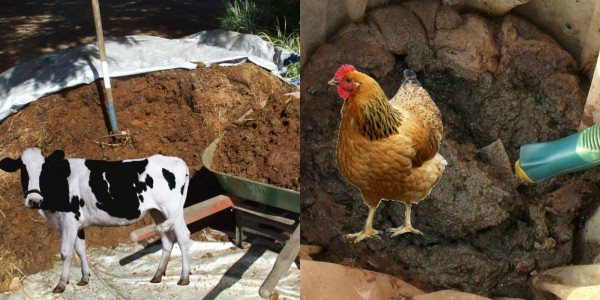

- Top dressing with bread - one of the most effective natural fertilizers, it is easy and inexpensive to prepare it. To make a nutrient from bread, you need to take a loaf of rye-flour bread, put it in a container and pour clean water so that the bread is completely covered with liquid. Leave the flour product in water for 12 hours. After that, you should mix the infusion with 10 liters of water.
- Chicken droppings - an excellent source of nutrients and elements. It is necessary to mix 0.5 liters of poultry droppings with a bucket of water, leave for two weeks. After the mass is infused, you should mix it with clean water in a ratio of 1:10. A little ash can be added if desired.
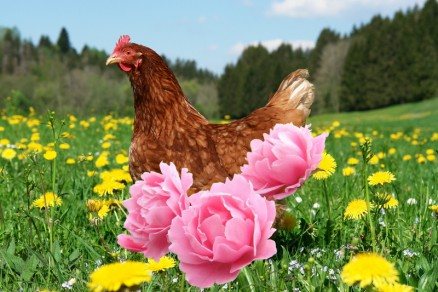

- Feeding with yeast... Take one hundred grams of yeast, pour a liter of warm water and add a glass of sugar. Leave it on for 12 hours. Then stir the solution with a bucket of water. Feeding peonies with yeast in spring helps to achieve remarkable results.
How and how to feed peonies in the fall after pruning
Old stems are harvested a week before the first frosts or immediately after them, if you do this earlier, in the future, violations in the development of the bushes may be observed. After pruning, any mineral fertilizers and liquid organic matter are no longer used.Before winter, peonies must mulch, the root system is located close to the soil surface, requires protection from frost, while the age of the flower is not important.
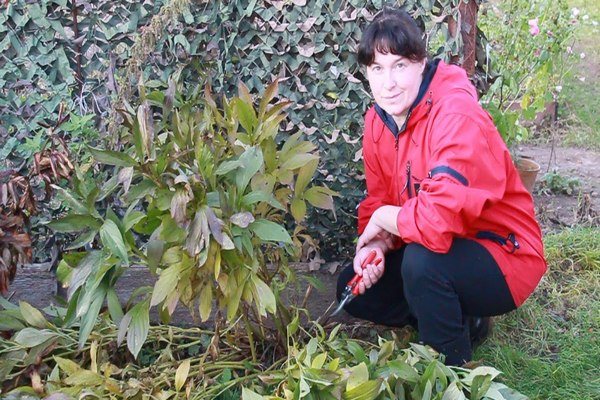

If during the season the peonies did not have enough food, peat, humus or compost are used as raw materials for mulching, this will serve as top dressing. The layer is made about 10-15 cm. Part of the nutrients will go into the soil in winter, but the main percentage of them will be received by the roots of the plant in spring, along with melt water. The mulch is removed immediately after the snow melts, otherwise the roots will mate.
Foliar dressing
It is recommended to carry out foliar feeding of peonies in spring in dry, calm weather, when there is no bright sun. When applying fertilizer by spraying, the following scheme must be followed:
- The first foliar feeding is carried out after the aerial part of the plants appears. Spraying is carried out with a solution of Urea (urea), the drug is diluted in a ratio of 50 grams per 10 liters of water.
- Second time the procedure is carried out with a solution of Urea with the addition of a complex fertilizer with useful microelements. Experienced gardeners recommend using a solution with a lower concentration than a solution for root procedure.
- Third time you should use a complex mineral fertilizer for spraying, which should be diluted in water according to the instructions. To stimulate the growth of young shoots, it is recommended to use Sodium Humate (5 grams must be mixed with 10 liters of water). To accelerate the formation of roots, it is recommended to use the drug Heteroauxin (two tablets per ten liters of water).
Note! The time interval between foliar dressings should be approximately 2 weeks.
What do peonies need after flowering
In the summer, when the peonies have faded, they need to be fed. This is done so that the culture recovers its strength. It is worth using fertilizers with potassium and phosphorus at this time. For 10 liters of water, 30 g of superphosphate and 20 g of potassium sulfate are taken. After thorough mixing, irrigation is carried out in the furrows made in the root zone. It is very important to make sure that the solution does not get on the stems and leaves of the plant, otherwise a burn may occur.
Interesting!
In ancient times, it was believed that peonies can heal more than 20 different ailments. Therefore, they were planted near monasteries and temples.
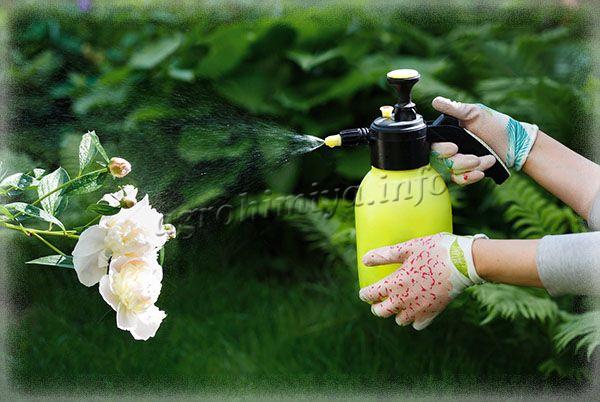

Foliar and root dressing should be carried out in the morning or evening.
Tips for the procedure
The procedure can bring noticeable positive results. But only if it is done correctly. To complete feeding correctly, you must follow the following guidelines:
- When applying fertilizers, it is necessary that the soil is moistened and pre-watered. It is highly discouraged to feed the plant around which there is dry soil.
- Follow the recommended pattern.
- Keep track of the concentration and amount of fertilizers applied. An excess will not only not bring the desired benefits, but can also harm the plant.
- It is recommended to monitor the amount of fertilizers with nitrogen, because if you apply too many preparations with nitrogen, this will cause rapid growth of leaves, and the growth of buds will slow down.
- When root dressing, make sure that the nutrient does not get into the leaves of the plant, as this can cause burns.
- It must be remembered that for the abundant flowering of peonies in the spring, not only this procedure is important, but also the rest of the care: regular watering, loosening the soil, eliminating weeds.
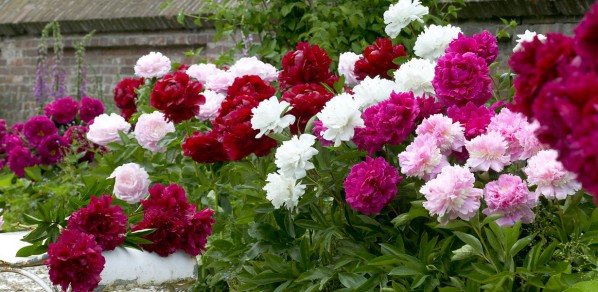

Among all the dressings, it is the spring one that is of particular importance. It is needed for the plant to recover after winter, so that peonies bloom magnificently. Of course, everything should be in moderation, otherwise, instead of an excellent result, you can harm the flower.If you follow the recommended schemes, tips and rules, then you will surely expect success.
Fertilizer selection for lush bloom
The type of fertilizer for perennials is chosen depending on the time of its application. Simple mineral complexes are the easiest to use. But this way of saturating the plant is not always able to fully satisfy the needs of the bush.
For the first feeding
During the first feeding, the peonies need nitrogen-potassium fertilizers. 10 g of nitrogen and potassium are added to one peony bush. Dry granules are mixed with each other and scattered over the remnants of snow around the bushes. Toga, dissolving in melt water, the fertilizer will penetrate to the roots of the plant and saturate them with nutrients.
If you do not want to mix the fertilizer yourself, you can use ready-made mineral complexes. The "Kemira-Universal" product gives a good effect. Before its introduction, the plants are watered, then the drug is scattered around the bushes and embedded in the ground. Thanks to the chelated form of the drug, it is effectively absorbed by the roots. The participation of microorganisms for its assimilation is not required.
Growth stimulator "Siliplant" is suitable for root and foliar feeding. Dissolve 2 ml of the preparation in 1 liter of water. If feeding is carried out by the root method, then 1 sq. m consume 5 liters of solution. When foliar spraying, the consumption of the drug is much less. 10 sq. m planting takes only 1.5 liters of solution.
Urea can also be used for foliar feeding. The agent in the amount of 50 g is dissolved in 10 liters of water and the green shoots that have appeared are sprayed with the solution. Wood ash is used for the same purpose. It is scattered around the plants even before the first shoots germinate.
Fertilization during budding
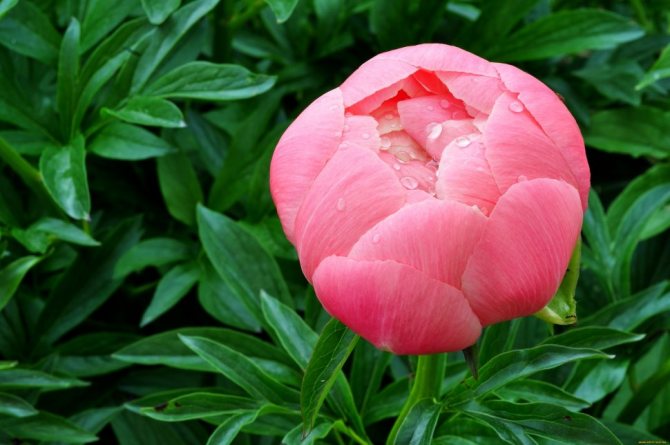

For the second feeding, all elements are important. Therefore, 10 g of potassium, 10 g of nitrogen and 15 g of phosphorus are applied under each bush. At this time, the chemical preparation "Kemira Kombi" is used. First, a small amount of granules are poured around the bush, and then irrigated generously. The fertilizer quickly dissolves under the influence of water and penetrates with it to the root system of the peony.
For foliar feeding, urea is suitable in combination with micronutrient fertilizers. 50 g of urea and 1 tablet of micronutrient fertilizers are dissolved in 10 liters of water. Bushes are sprayed with this solution.
Advice! Ash feeding gives a good effect for laying a large number of buds, but it is prepared in advance. In 10 liters of water, 1 liter of wood ash is diluted. Cover the container with a lid and leave for 7 days.
At the same time, you can fertilize peonies with "Epin". This drug is diluted according to the instructions and the bushes are watered with a solution. "Epin" is good for saving flowers after sudden frosts, if they are immediately treated with the drug.
Planting a large number of buds and active flowering is facilitated by organic fertilizing. After the appearance of the first shoots, the plant is fed with yeast. In 10 liters of warm water, dissolve 100 g of dry baker's yeast and add 0.5 cups of wood ash. First, the nutrient solution is poured onto the ground around the bush. Then it is irrigated with clean warm water.
A similar effect is obtained by using black bread as a top dressing. In 10 liters of warm water, soak 0.5 kg of crackers and add 1 glass of granulated sugar. The product is kept for 12 hours, then filtered. The resulting liquid is poured over the bushes.
Top dressing after flowering
For the third feeding, nitrogen is not used, so as not to provoke the growth of greenery. This time use 10 g of potassium and 15 g of phosphorus. To accelerate the formation of kidneys, use the drug "Kemira Universal" in the same way as in early spring. After irrigating the bushes, 1 handful of granules are scattered around the plant and embedded in the soil.
For foliar feeding, micronutrient fertilizers are used in the form of tablets. 2 tablets are diluted in a bucket of water and the leaves are sprayed with the solution.
Autumn fertilization
Adult peony bushes are completely pruned to prepare for winter. Such a measure contributes to the accumulation of a large amount of nutrients in the roots of the plant. They will help the peonies to wake up after hibernation.
Important! The best pre-winter feeding option would be superphosphate. This instant fertilizer is well absorbed and builds up in the root system.
If the peony bush was transplanted, then for feeding they use:
- humus;
- potassium salt;
- phosphate rock.
Humus is placed in the hole during transplantation. The rest of the fertilizers are mixed with the soil and the roots of the plant are covered.
Microbiological fertilizers are used to prepare for winter. The drug "Baikal EM-1" contains live microorganisms. They are necessary to improve the structure and increase the fertility of the soil. The tool is added to compost, and in the fall it is used as mulch, covering adult plants with a layer of at least 7 cm.
The main fertilization during planting and transplanting
Before the peonies are planted in the ground, you need to prepare the planting hole and make the main fertilization with the expectation that they will be enough for the development of the vegetative mass for 6 - 8 months. The soil is fertilized with special compounds, most often organic. Manure with a part of humus is suitable as nutrient mixtures. Organic substances must not be abused. They are mixed with mineral compounds and soil. Substances are added to the hole to deoxidize the soil - for example, dolomite flour, if necessary. Use potassium sulfate or superphosphate as mineral fertilizers. The same complexes are used when transplanting a plant to a new location. Remember that peonies prefer slightly acidic soil; on neutral and very acidic soils, the plant does not bloom and develops more slowly.
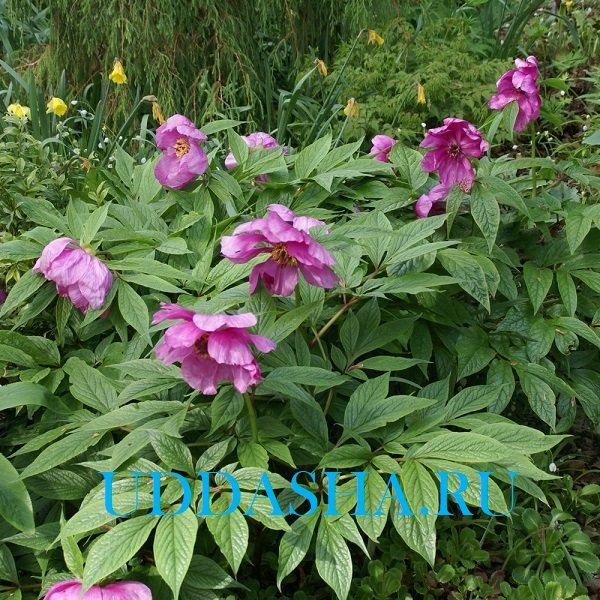

On highly acidic soils, peonies develop normally, but they can become infected with gray rot. A perennial does not feel very well on clayey heavy soils. In such conditions, peonies do not bloom and develop very slowly. The sandy soil causes the plants to stretch out the stems, the flowers and leaves become small. It is best to make such soil heavier with special compounds and fertilize with organic matter and mineral complexes.
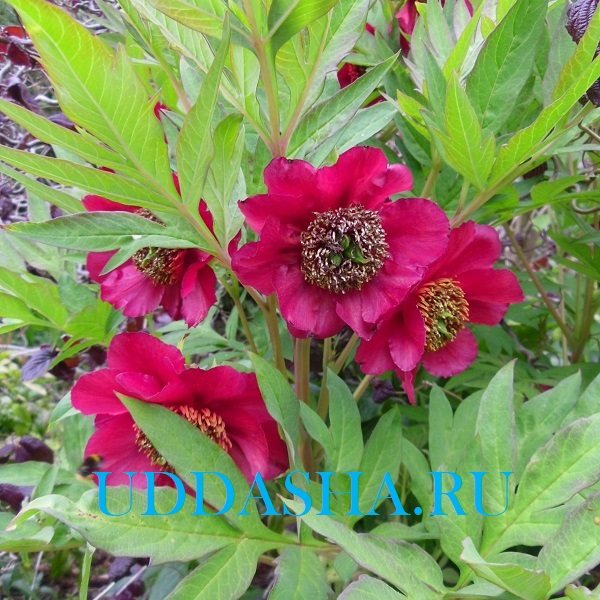

Peonies develop and bloom best on loamy structures with a lot of nutrients. If you want the plant to please with a luxurious and long flowering, then try to create suitable conditions for it. On nutritious loams, frequent feeding is not required - in spring and during the growing season. With an excess of fertilizers, the plant does not develop well and may be inhibited.
Terms of introduction
Fertilizers are applied taking into account the age of the flower and the regional characteristics of cultivation. The optimal dates are from the first half of September to mid-October.
It is worth being guided by a long-term weather forecast so that the end of the work takes place 30-45 days before the arrival of frost.
When breeding peonies in the fall, feeding should be completed by mid-September, so that the root system has time to get stronger before the onset of a cold snap.
More often, gardeners divide food into 2 conditional periods:
- Before pruning, in the first half of September, when replacement buds are formed in the culture, from where stems will grow in the spring next season. The preferred diet is minerals.
- After pruning, when only 2-3 cm stumps remain on the bush.At this stage, it is better to use organic matter.
Autumn feeding: all pros and cons
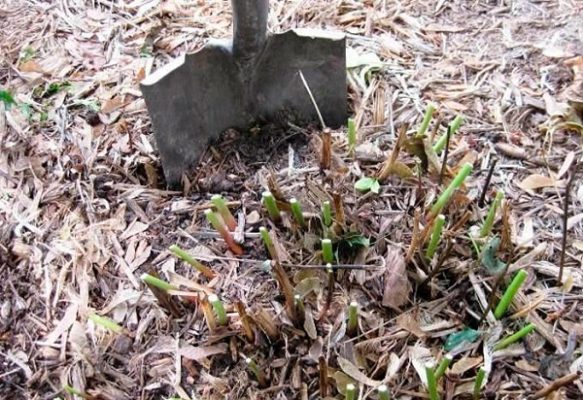

Top dressing of peonies in the fall plays a big role in the flowering of culture
Peonies are perennial crops that grow in one place for a long time and bloom actively in the summer.During this time, they give almost all the nutrients to flowers and leaves, so the quality of new inflorescences can deteriorate significantly.
The main feature of peonies is that the development of the root system of the bushes continues even after active flowering. If you take a closer look at the roots, you can see small thickenings on them, in which the nutrients necessary for the formation of buds and inflorescences accumulate. Accordingly, feeding peonies in the fall contributes to the appearance of lush flowers in the next season and helps to prepare for the winter cold.
Many gardeners consider the procedure for applying top dressing in the fall to be impractical and useless, but in fact this is not the case. You should not ignore it, otherwise next spring the flowers of the peonies will be small, and the leaves are pale and sparse.



